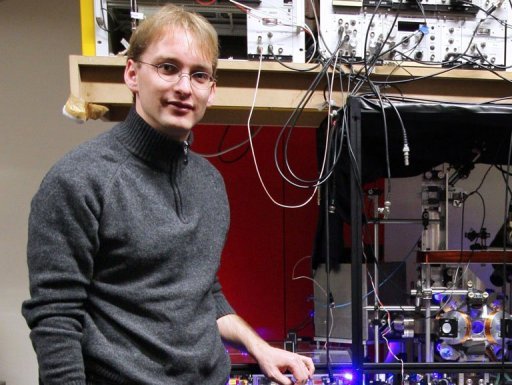SUMMARY
This is AI generated summarization, which may have errors. For context, always refer to the full article.

PARIS, France – Physicists said Tuesday, July 9, that a so-called optical lattice clock, touted by some as the time-measuring device of the future, had passed a key accuracy test.
The performance boosts chances that the world’s timekeepers will one day adopt it for defining the second, they said.
The atomic clock, introduced in 1955, measures time by using microwaves to probe atoms as they transit between two energy levels.
The high accuracy of these clocks lies behind the success of the Global Positioning System (GPS), which requires orbiting satellites to be synchronized so that their signals, received on Earth’s surface, can be triangulated to give the receiver’s location.
Impressive as these clocks are, they can — in theory — be outperformed by lasers.
This is because the “tick” of an atomic pendulum is in fact something that occurs trillions of times every second… if you can measure it.
Microwave radiation operates at a frequency of about 10 Gigahertz, whereas that of a laser beam is 40,000 times higher.
As a result, a laser can dissect the “tick” into many more time intervals than a standard atomic cesium clock, and offer higher accuracy.
In a study published in Nature Communications, a team led by Jerome Lodewyck of the Paris Observatory describe the performance of an optical lattice clock, in which about 10,000 atoms of the radioactive element strontium were trapped and measured by laser light.
The clock proved accurate to within one second every 300 million years, three times more precise than its cesium rival.

The physicists also compared team performance. Two paired-up optical lattice clocks kept better time than three cesium clocks operating in tandem.
This is important proof that the concept can work in a real-life situation, when clocks have to be synchronized to provide comparable data, Lodewyck told AFP by email.
“This prototype comprises several identical optical clocks generating a stable and accurate signal, from which an ‘average’ timescale can be constructed,” he explained
Optical lattice clocks have been around for only a decade, and their performance is becoming more and more impressive, said Lodewyck.
He pointed to an aluminum ion clock at the US National Institutes of Standards and Technology (NIST) in Colorado that is accurate to within one second every 3.7 billion years.
Microwave measurement of the transition of the cesium atom has been the benchmark of the second, under the international system of units (SI), since 1967, but further tests will be needed before optical lattice clocks can replace this as the new standard, said Lodewyck.
If optical lattice clocks become the new benchmark, they offer outlets in high-end physics, such as measuring Einstein’s theory of general relativity, and in Earth-observation satellites tracking sea-level rise more accurately than before. – Rappler.com
Add a comment
How does this make you feel?
There are no comments yet. Add your comment to start the conversation.